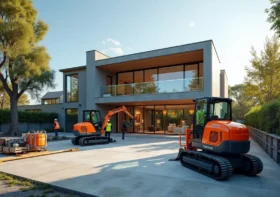Why Slow Design Is Becoming the Next Luxury

The modern world has fast food, fast fashion, fast furniture… fast everything.
Plastic chairs dressed up to look like wood, cheeseburgers that look like they’re healthy because of two slices of tomato, a pleather jacket that’s been cut and sewn within 20 minutes, and that’s essentially plastic, and this is what we wear, eat, and live in every day.
What is the price we pay for this convenience and cheap price? It all falls apart quickly.
Except for food, of course, because it’s pumped and filled with so many chemicals that it can last forever.
Let’s focus on design for a moment. With fast furniture, your home feels almost disposable because you’re always having to buy new stuff. However, something interesting is happening because people are finally waking up to the fact that slow design and furniture that was built with care is the only thing worth the money and time. It’s convenient when you can furnish an entire apartment in 2 days, but the trade-off is quality.
And this is why more and more buyers are willing to wait months for a single piece because they’ll have something real that will last.
Contents
The Shift Away from Fast Furniture and Disposable Interiors
Fast furniture is cheap, it’s easy to get, it looks okay-ish, and it’s made to be replaced.
So that new coffee table you got on sale, as beautiful as it looks, won’t last. You can expect the surface to start peeling within a year, and the legs will get loose even sooner. And then you’ll need to buy another one and another one and another one. Now imagine this happening across millions of homes.
Do you see the problem? Tons and tons of waste and a culture built on throwaway living.
The good news is, people are starting to recognize this as an issue, and they’re pushing back against it. They’re saving up for pieces that have meaning and quality instead of filling up their spaces with what’s essentially waste waiting to happen.
We have minimalism and conscious living to thank for this change, but there’s also this idea that true luxury now comes from patience. Having something that’s built to last, even if you waited months for it, is a lot more valuable than walking out of a store with the entire kitchen.
Take a look at the handcrafted furniture the Amish make, for example.
The Amish have a long history of woodworking, and they use solid hardwoods and mostly hand tools. Machinery is minimal, and their techniques are passed down for generations. Their furniture is a recognized category, and most of it is made in Pennsylvania, Ohio, and Indiana.
Look up the term ‘Amish furniture PA’ online and then compare that with something cheaply-made or something mass-produced quickly.
You’ll be shocked.
What Makes Slow Design a Luxury
Slow design has something to do with the looks, sure, but it’s more about values.
And today, something that’s made with care and meaning is true luxury. And that’s not just a random dramatic text filler because look at actual luxury brands. What happened lately? They’ve been exposed for making their items in China’s fast fashion factories, so it would seem that what we’ve been sold as luxury is anything but that.
Here’s what defines real luxury.
Longevity and Durability
One of the biggest issues with fast fashion is how much waste it produces, and it’s the same thing with fast furniture. But it all falls apart so quickly, so what else can you do but throw it out and buy something else?
The simple truth is that mass-produced stuff breaks down within a few years if you’re lucky, and handcrafted pieces can last for decades.
This kind of longevity also gives them emotional value. It becomes something worth keeping and maybe even passing down.
Sustainability and Responsibility
Slow design respects the planet. It doesn’t try to cut corners with cheap materials, and instead it focuses on wood, metal, and responsibly sourced fabrics. Modern buyers even look for eco-friendly labels or proof that what they’re buying was made with care for the environment.
So that extra effort isn’t just good for the planet because it also adds value that makes people proud to bring these pieces into their homes.
Storytelling and Identity
Luxury also comes from stories behind the things people own. With slow design, every piece reflects the skill of the person who made it and the culture it comes from.
For instance, a handmade chair is more than a place to sit; it carries the identity of the person who made it and the community that impacted its style.
Buyers find these stories are what make the objects unique and exclusive because it’s not just furniture, it’s a piece of heritage.
Conclusion
True luxury is more than a high price and a well-known name.
It’s about the quality, the longevity, the story behind it, and the traditions that affected it. All this is what gives slow design the edge. Everyday objects and trinkets can turn into little luxuries, and no mass production can copy this.
2 Interlinking Opportunities:
From https://designrelated.com/renovation-ideas-thatll-transform-your-home/ with anchor inspire every room
From https://designrelated.com/the-role-of-green-building-materials-in-sustainable-design/ with anchor waste it creates



